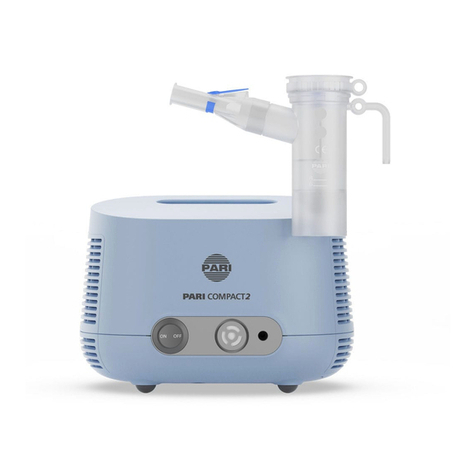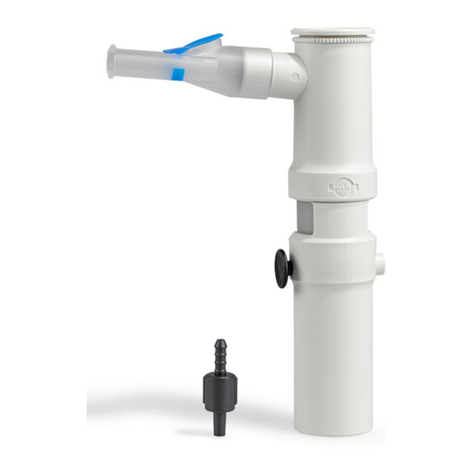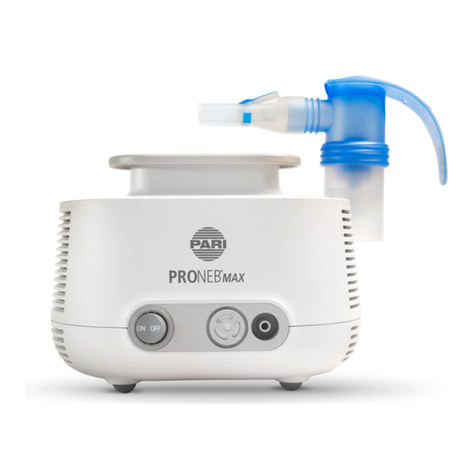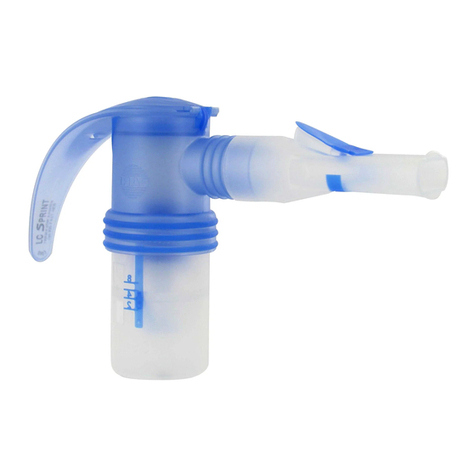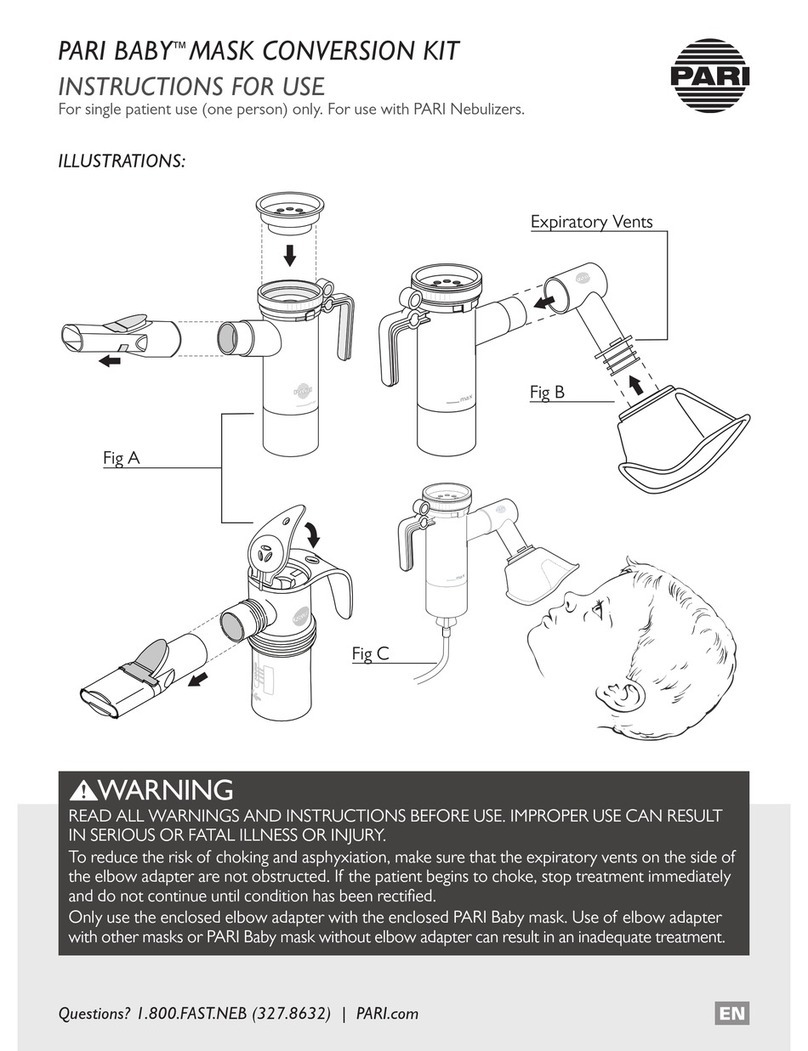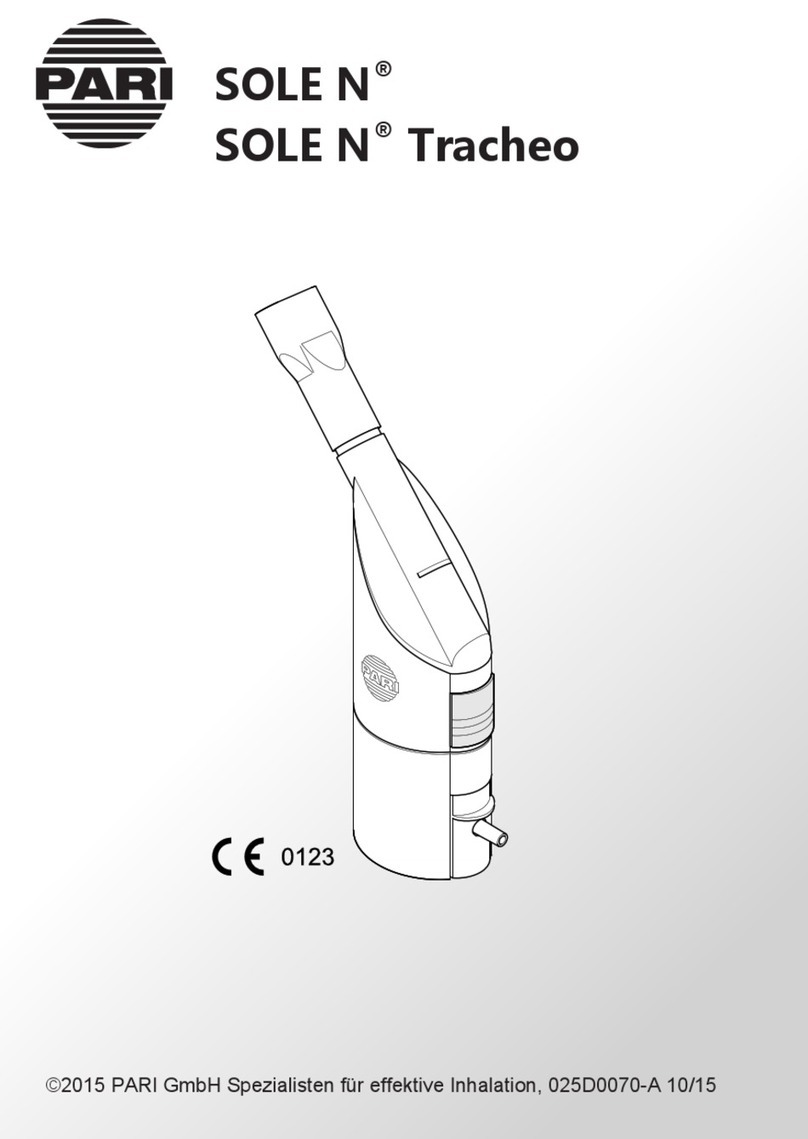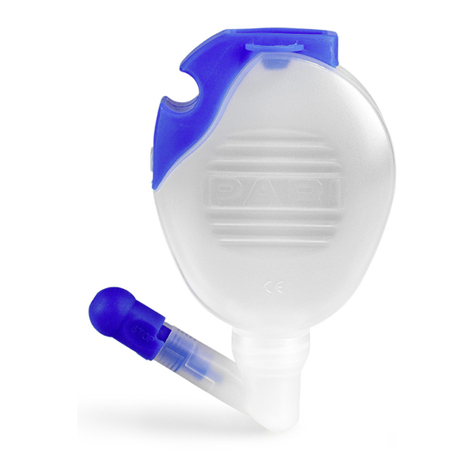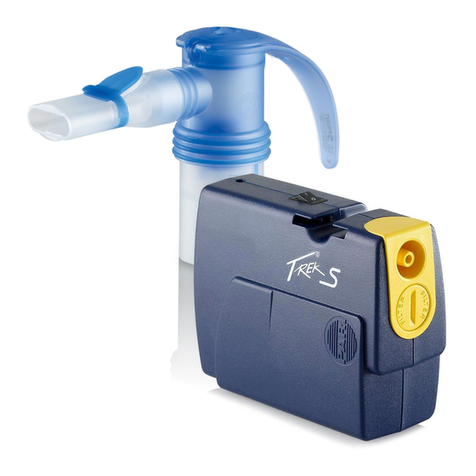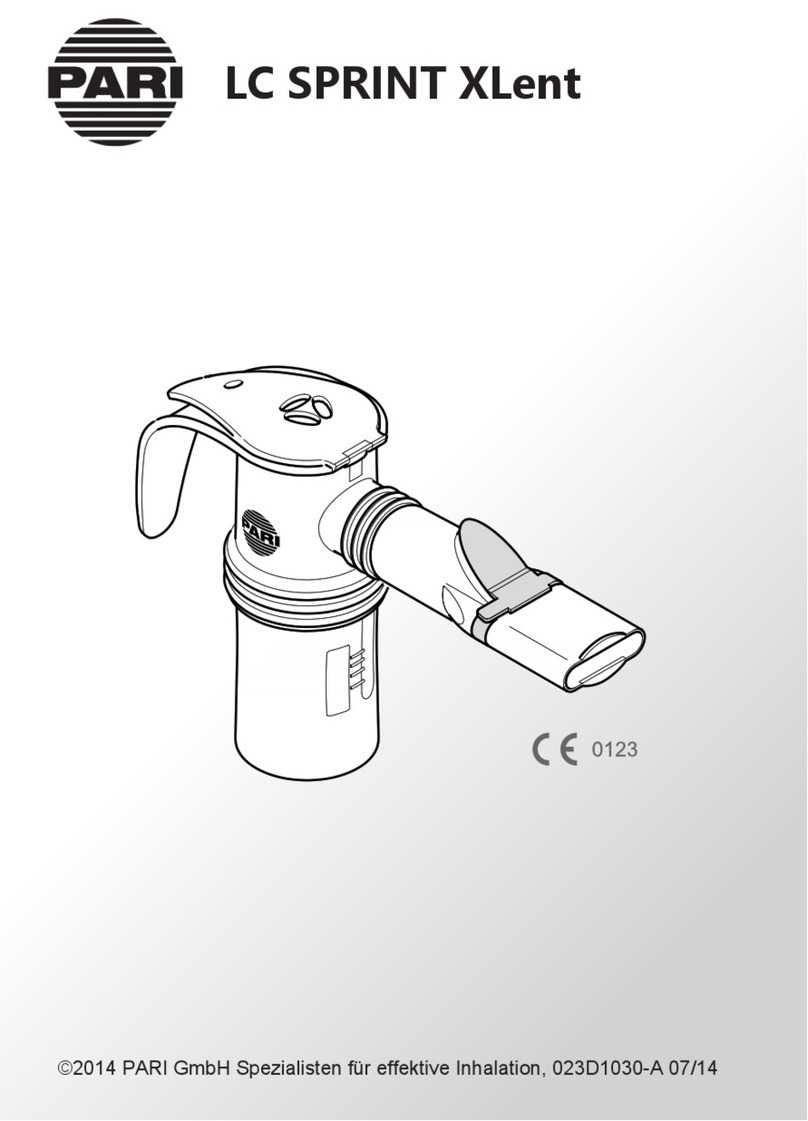Pari SINUS2 User manual
Other Pari Medical Equipment manuals
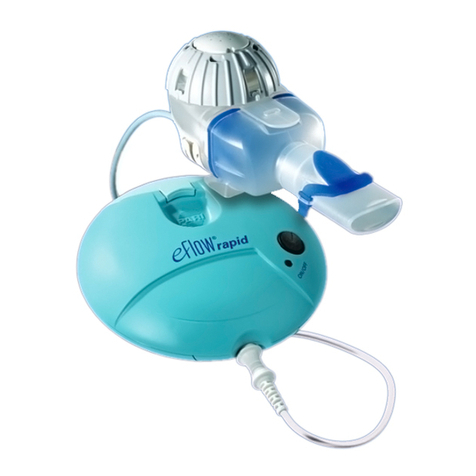
Pari
Pari eFlow rapid User manual
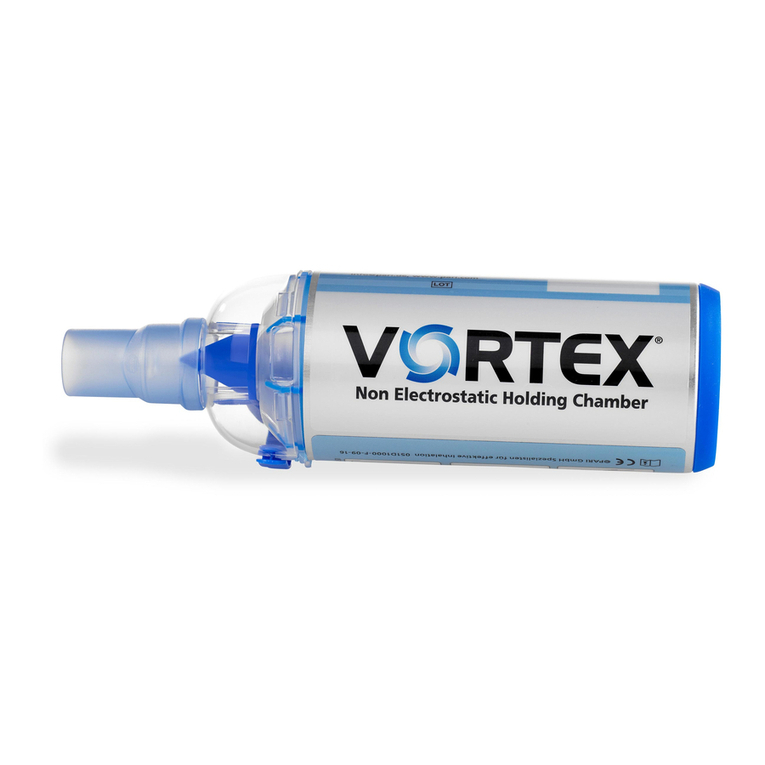
Pari
Pari VORTEX Tracheo User manual
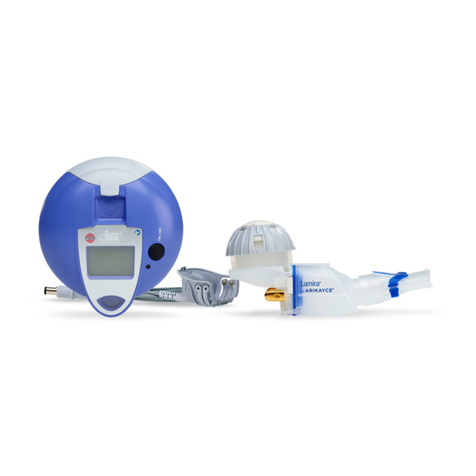
Pari
Pari Lamira User manual
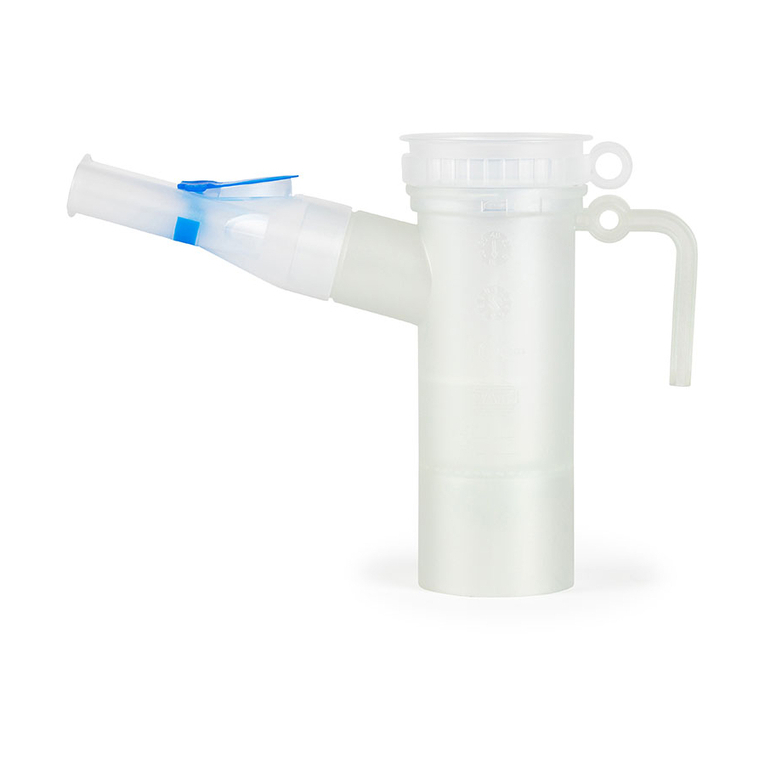
Pari
Pari LC PLUS 022G8100 User manual
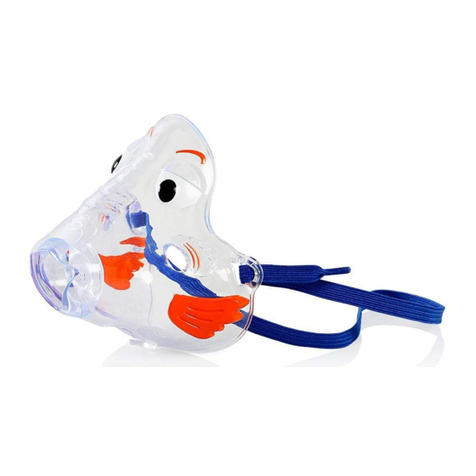
Pari
Pari bubbles the fish ii User manual
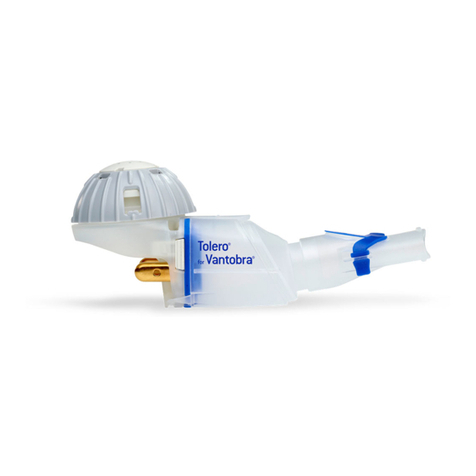
Pari
Pari Tolero User manual

Pari
Pari eFlow rapid eFlow-rapid User manual
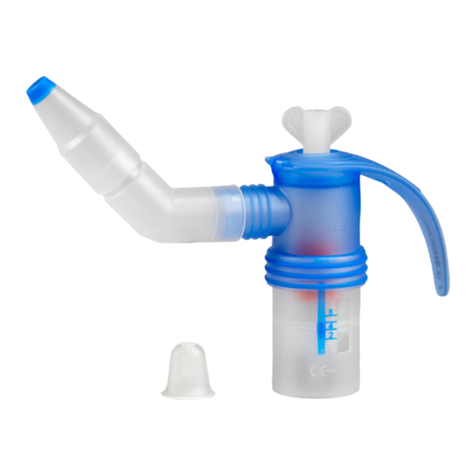
Pari
Pari LC SPRINT SINUS User manual
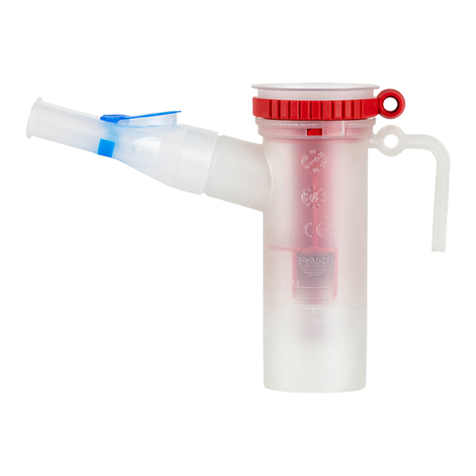
Pari
Pari LC plus User manual
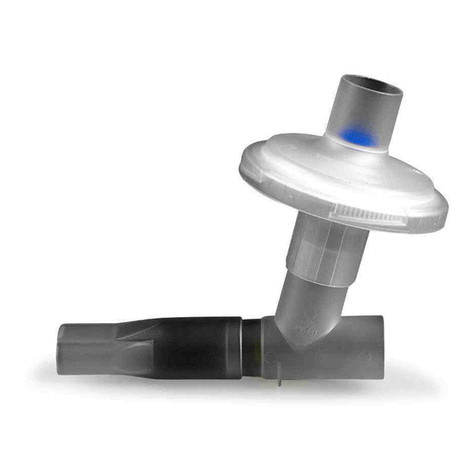
Pari
Pari 041G0500 User manual
Popular Medical Equipment manuals by other brands

Getinge
Getinge Arjohuntleigh Nimbus 3 Professional Instructions for use

Mettler Electronics
Mettler Electronics Sonicator 730 Maintenance manual

Pressalit Care
Pressalit Care R1100 Mounting instruction

Denas MS
Denas MS DENAS-T operating manual

bort medical
bort medical ActiveColor quick guide

AccuVein
AccuVein AV400 user manual
